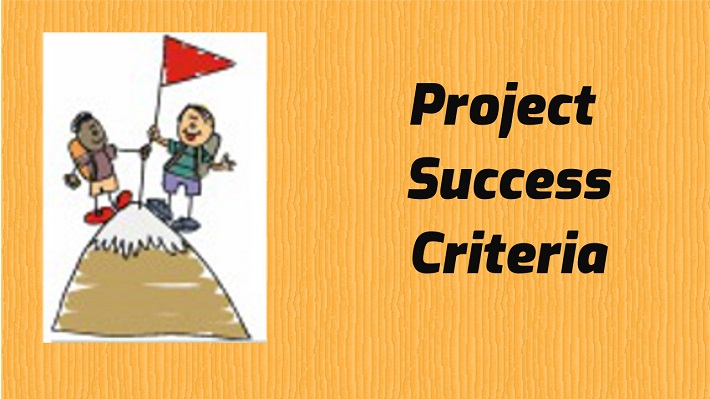
Project Success Criteria#
Introduction#
You ask yourself how many years you have been in project management? How many times you were waiting for a long to get the start of an exciting new project? How many times did you want to close an existing stressful project and want to start a new project on the new team? Many times due to the excitement of the new project we just focus on the project team, deliverables, technology, project duration, and cost. We create our project plan and our team starts working on the new project and again the same problem starts surfacing which was happening in our previous project! One of the main cause of that is we do not spend enough time to understand who are the different stakeholders and what is the meaning of project success from the point of view.
What is Project Success Criteria?#
To understand the Project Success Criteria we need to understand the meaning of the success of a project. Project success needs to be defined in terms of metrics and their values. If those metrics are within the agreed limit we say success criteria met. But every stakeholder has different metrics to measure success. How do you know which metrics are important for which stakeholder? Or do you even bother about other stakeholders or just focus on the client or user for whom you are making the product? As a project manager, we do not know what is the imagination, expectation of a particular stakeholder. What should be done? Ask! To whom? Stakeholders! Which stakeholder? All key stakeholders. Now the question is when should I ask the expectation of stakeholders?
Changing Success Criteria#
We know human beings learn and adapt with time. Once you start a project without understanding the expectations of stakeholders then it may be possible that their expectations change and you are unaware. Now in the absence of documented/agreed expectations if a complaint is registered then this complaint may be related to his original expectation, which is not fulfilled, or it may new expectation because he has learned something new during the project execution. In addition to that, in the project lifecycle stakeholders can change, an old person is replaced by a new person and his expectation are completely different. How to handle these undocumented and changing expectations?
If your project management methodology is not a waterfall, then you may not have a single planning stage and whenever you are planning, you should define and refine the expectations of the stakeholders. Here I am not recommending that every time you start from scratch or depend upon heavy documentation. I am recommending that you visit your existing test-case, metrics, and values and ask yourself whether it is still valid or it has changed?
Project Success Criteria Examples#
Sometimes people struggle to visualize those success criteria. Below, I am writing few examples of project success criteria and these are just a direction do not consider them as a real road. Just take lead from these examples and define the success criteria of your project. As early you define and start tracking those that much easy for you to manage stakeholder expectations.
- All the agreed functional test-cases should pass.
- There should not be any critical or fatal defect in the product.
- The project should be delivered within +/- 1 week of the agreed time.
- Resource utilization in the project should not be less than 70%.
- The project should be completed within +/- 5% of the baselined cost.
- The productivity of the team for ABC work should be x unit/day.
- Project risks should be managed within the risk budget allocated for it
- The project should finish within the cost budget or ceiling limit set for it.
- There should be zero regulatory compliance issues.
- There should be zero safety process compliance issues.
- During the project, resource iteration should be less than 2%.
- Minimum 75% of the leaves allocated for the project staff should be utilized by them in the project life cycle.
- Overall customer satisfaction should be more than 90%.
- Overall team satisfaction should be more than 90%.
- Not more than x number of 1st level escalations and y number of 2nd level escalations in a project lifetime.
- During project life, it should lead to new business opportunities worth x amount
Conclusion#
Remember, if you cannot measure it you cannot manage it. If you want to manage success, then you have to learn to measure it. You have to come up with metrics, track those metrics, report those and improve those. As early you know about your project’s success criteria that much good for you and your project.


Comments: